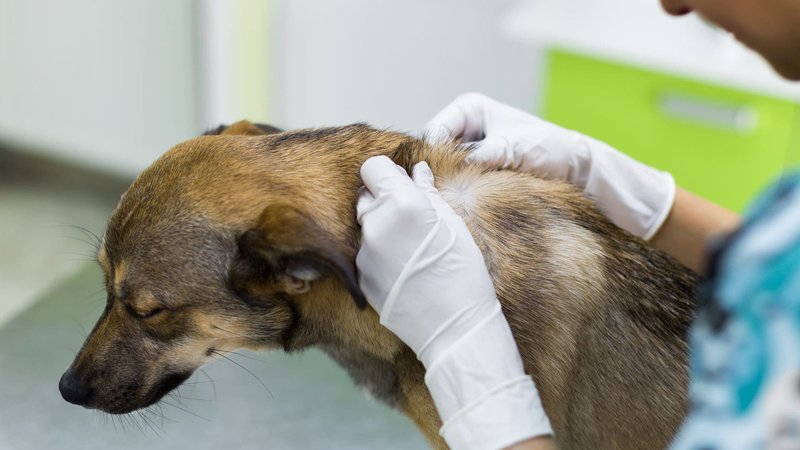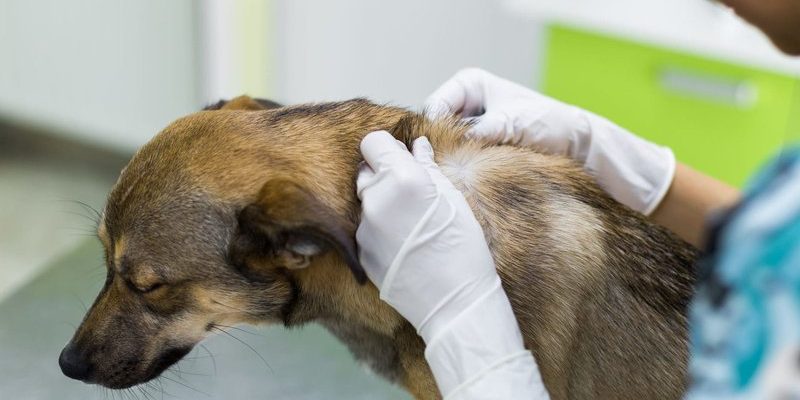
Wolf worms, also known as cuterebra, are fly larvae that can affect various animals, especially dogs. These larvae find their way into the skin, leading to infections and potential health issues. If you’ve got a beloved pooch that spends time outdoors, it’s crucial to be proactive. Prevention is key, and I’m here to guide you through the ins and outs of keeping your kennel and furry buddies safe from these unwelcome pests.
What Are Wolf Worms?
To understand how to prevent wolf worm infestations, it helps to know what they are. Wolf worms are the larvae of certain types of flies, particularly the Cuterebra species. These flies lay their eggs in the grass or soil, and when an unsuspecting animal walks by, the eggs hatch, and the larvae latch onto their host.
Once inside the host, they can create a painful condition called a cuterebral myiasis. This can result in swelling, irritation, and even infection. Dogs and other outdoor animals are especially vulnerable when they spend time in areas where these flies thrive. Honestly, the idea of these little creatures burrowing into your pet’s skin is enough to make any pet owner’s skin crawl!
How Do Wolf Worms Get Into Kennels?
You might be wondering how wolf worms find their way into your outdoor kennel. They’re attracted to certain conditions that are often present in backyards. Here are a few common ways they can infiltrate:
- Outdoor Grass and Soil: The adult flies thrive in warm environments, laying their eggs in grass and soil, especially in areas with dense vegetation.
- Inviting Shelter: Dogs create a warm and cozy environment, which is appealing to these pests. If your kennel is a quiet spot with tall grass nearby, you might be setting the stage for an infestation.
- Wildlife Visitors: Local wildlife, like rabbits or rodents, often carry wolf worms. If your pets have access to areas where these animals roam, it increases the risk of larvae being introduced.
Understanding these entry points makes it easier to strategize ways to keep your outdoor kennel safe.
Best Practices for Preventing Wolf Worm Infestations
Prevention is always better than cure, especially when it comes to your pet’s health. Here are some effective strategies to protect your kennel from wolf worms.
Maintain Cleanliness
Keeping your kennel clean is one of the easiest ways to prevent wolf worms. Regular cleaning can disrupt the life cycle of these pests. Here’s what you can do:
- Frequent Cleaning: Regularly clean the kennel area, removing any debris or waste. Consider power washing the floors to eliminate any larvae that might be lurking.
- Trim Vegetation: Keep the grass short and trim any bushes or shrubs around the kennel. This reduces the places where adult flies can lay their eggs.
- Regular Inspections: Always check your pets for signs of wolf worms after outdoor play. Early detection is key, so familiarize yourself with what to look for.
Create a Barrier
Physical barriers can help keep the flies away and give your pets a safe space. Here are some ideas:
- Fencing: Installing a fence can limit wildlife access to your pets. Choose a fence that’s high enough to discourage climbing and deep enough to prevent burrowing.
- Gravel or Mulch: Surrounding the kennel with gravel or mulch can deter flies from laying their eggs nearby. These materials can also provide a clean, dry area for your pet to roam.
- Canopies or Tarps: Adding a canopy or tarp can protect your pets from direct sun and may disrupt flies’ activity.
Regular Vet Check-ups
Regular veterinary visits are essential for keeping your pets healthy and safe from external threats. Here’s why:
- Preventive Treatments: Your vet can recommend treatments that protect against various parasites, including wolf worms. Regular vaccinations and checks can keep your pets healthy.
- Health Monitoring: Routine check-ups allow your vet to spot any potential issues early. If wolf worms do manage to latch on, prompt medical attention can prevent complications.
- Educating Yourself: Your vet can help educate you on the signs of wolf worms and what to do in case of an infestation.
Signs of Wolf Worm Infestation
So, how do you know if your pet has fallen victim to wolf worms? It’s important to recognize the signs so you can act quickly. Here are a few symptoms to look for:
- Swelling: Look for lumps or swelling on your dog’s body, especially around the head or neck. These are often the larvae beneath the skin.
- Itching and Irritation: If your pet is scratching more than usual or seems agitated, it may be a sign of discomfort from the larvae.
- Abnormal Behavior: Changes in your pet’s behavior, such as reluctance to play or lethargy, could indicate a problem.
If you notice any of these signs, it’s crucial to consult with a veterinarian as soon as possible. They can provide guidance and treatment to address the issue.
What to Do If You Find Wolf Worms
If you discover wolf worms in your pet, don’t panic. Let me explain the best course of action:
1. **Contact Your Vet**: The first step is to reach out to your veterinarian. They can guide you on the best treatment options.
2. **Avoid Home Remedies**: While it might be tempting to try removing the larvae yourself, it’s not advisable. This can lead to infections or other complications.
3. **Follow Treatment Plans**: Your vet may prescribe medication or treatment to safely remove the larvae or treat any associated infections. Follow their instructions carefully.
4. **Prevent Future Infestations**: After dealing with the issue, review your prevention strategies to ensure it doesn’t happen again.
Preventing wolf worm infestations in outdoor kennels takes a bit of effort, but it’s well worth it for the health and happiness of your pets. By keeping things clean, creating physical barriers, and staying on top of veterinary care, you can significantly reduce the risk.
And let’s be honest: there’s nothing better than watching your pets enjoy their time outdoors, free from worry. With these strategies, you can create a safe environment where your furry friends can thrive. Remember, when it comes to your pet’s health, a proactive approach is the best approach. Stay vigilant, and your pets will thank you!

